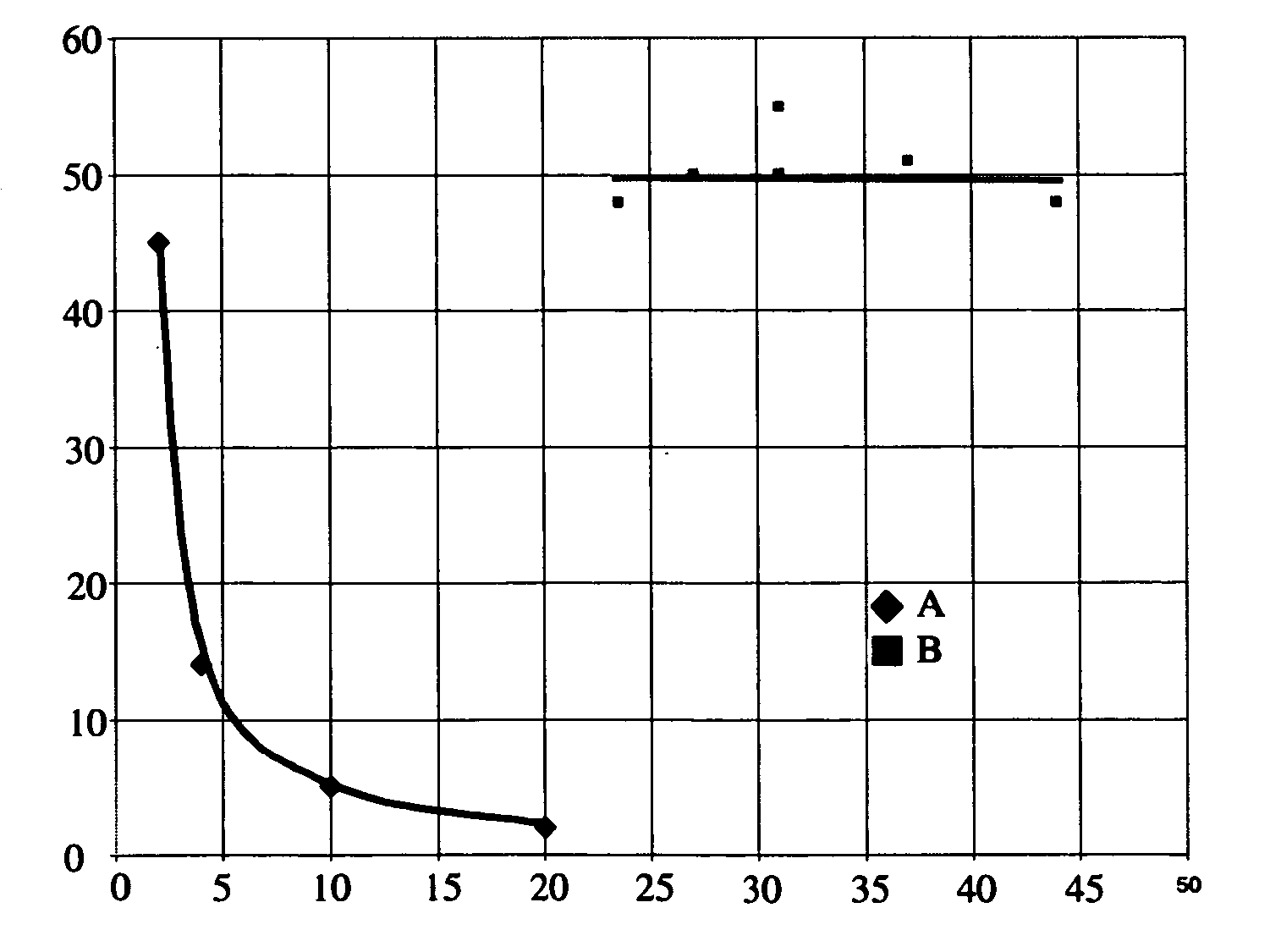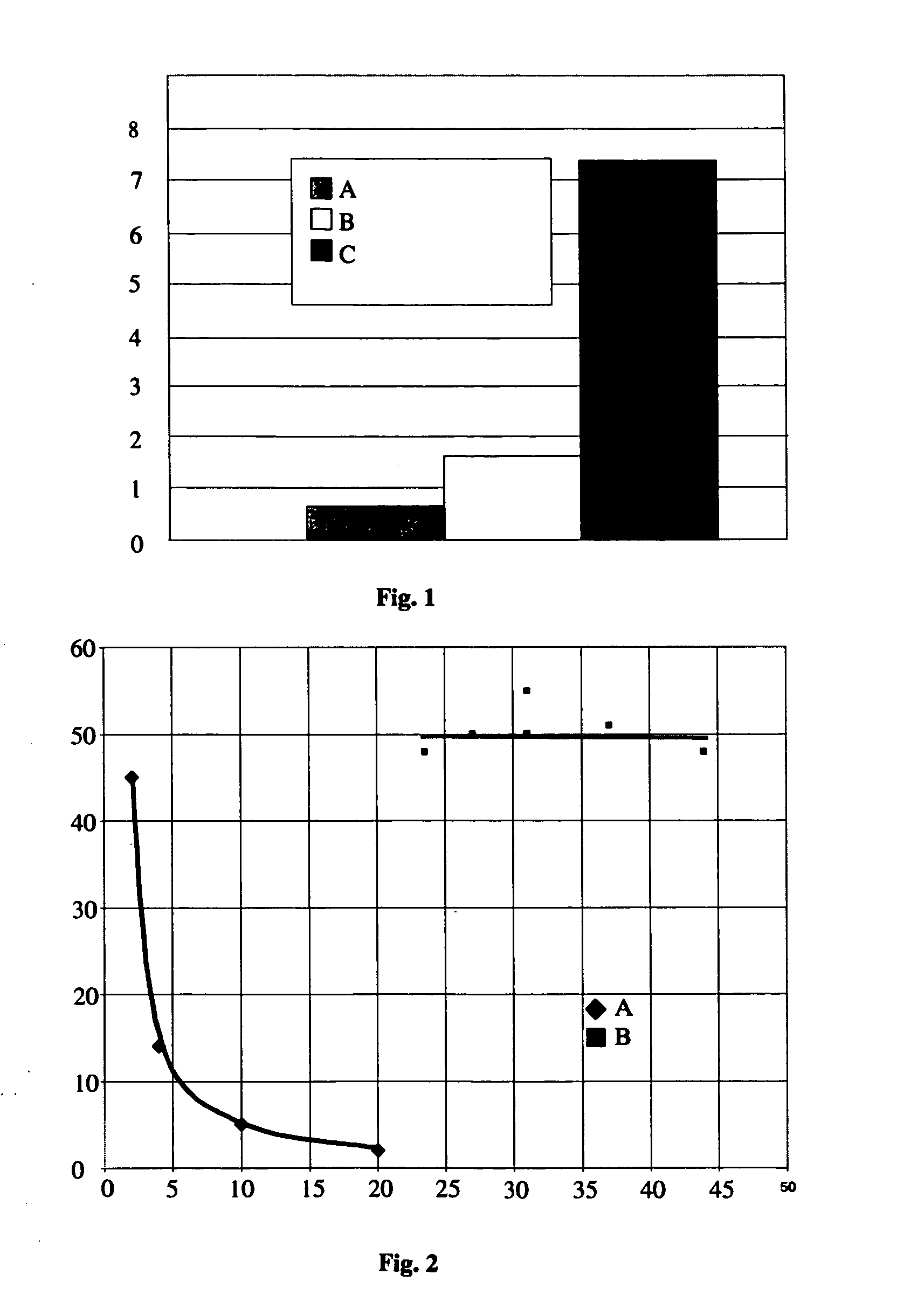Foams for removing pollutants and/or heavy metals from flowable media
- Summary
- Abstract
- Description
- Claims
- Application Information
AI Technical Summary
Benefits of technology
Problems solved by technology
Method used
Image
Examples
example 1
Description of the Production of Foam Which Comprises an Adsorbent Composition
[0028] Bayoxide® E33 having a granule size of 0.5-2 mm and a BET of 140 m2 / g was premixed into a standard polyol mixture consisting of Arcol 1108® as polyether alcohol having oxyethylene and oxypropylene units of a mean molar mass of 2000-6000 and Desmophen® 41WB01 as a polyetherpolyol having a high ethylene oxide content and foamed using toluylene diisocyanate (Desmodur® T80) as isocyanate reaction component, with the conjoint use of further additives and aids such as silicone stabilizer OS20® as silicone stabilizer, tert-amine catalyst Desmorapid® DMEA and Dabco® 33LV and Desmorapid® SO as tin catalyst. The content of adsorbent composition is 27.8% by weight, based on the total mass of reaction mixture, or 29.5% by weight, based on the total mass of foam reacted to completion, taking into account the gas loss due to the carbon dioxide propellant formed. The finished hydrophilic foamed polyurethane bloc...
example 2
[0031] A foam comprising an adsorbent composition produced according to Example 1 is used in a glass tube and flushed with 250 ml of mains water. For comparison, an equivalent amount of Bayoxide® E33 is packed into a glass tube, the filter base of which consists of a glass frit of size 1 (100-160 μm pore width) and is likewise flushed with 250 ml of mains water. The effluent filtrate is collected and the turbidity is measured as specified in DIN 38404 using the turbidity photometer LTP 5 from Lange; The mains water has a turbidity (TE-F) of 0.63. The water which has passed through Bayoxide® E33 has a turbidity of 7.30 and the water which has passed through the foam has a turbidity of 1.60.
[0032] In Table 1, as comparison, the turbidity of standardized BaSO4 suspensions are also listed.
TABLE 1Turbidity of aquarium water for different treatmentBaSO4Flow rateSampleModificationTE-FSO4 [mg / l][l / h]IFoam with1.600.845Bayoxide ® E33IIBayoxide ® E337.303.045IIIMains water0.630.3—
[0033] Th...
example 3
[0035] A phosphate solution comprising 2.90 mg / l is pumped through a foam comprising an adsorbent composition and for comparison through an equivalent amount of adsorbent composition. After 60 minutes; and after 12 hours, samples were taken and analysed for their phosphate content. The results are summarized in Table 2.
TABLE 2Phosphate content of eluates (FeOOH amountcorresponding to FeOOH content of the foam)PassagePhosphatetimecontentFlow rateSampleAdsorber[hours][mg / l PO4][l / h]1None—2.90—2Bayoxide ® E3311.05453Bayoxide ® E33120.50454Foam comprising12.3045Bayoxide ® E335Foam comprising120.3845Bayoxide ® E33
[0036] The data verify that the efficacy of the adsorbent composition (Bayoxide® E33) is not impaired by the foaming.
[0037] In the following example, the hydraulic properties of an adsorbate powder bed are compared with those of the foam:
PUM
| Property | Measurement | Unit |
|---|---|---|
| Percent by mass | aaaaa | aaaaa |
| Specific surface area | aaaaa | aaaaa |
| Length | aaaaa | aaaaa |
Abstract
Description
Claims
Application Information
 Login to View More
Login to View More - R&D
- Intellectual Property
- Life Sciences
- Materials
- Tech Scout
- Unparalleled Data Quality
- Higher Quality Content
- 60% Fewer Hallucinations
Browse by: Latest US Patents, China's latest patents, Technical Efficacy Thesaurus, Application Domain, Technology Topic, Popular Technical Reports.
© 2025 PatSnap. All rights reserved.Legal|Privacy policy|Modern Slavery Act Transparency Statement|Sitemap|About US| Contact US: help@patsnap.com


